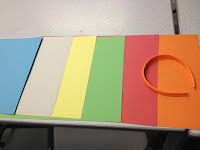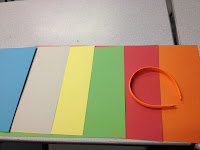Adobe InDesign Tutorials 2
Continuing from the last session, we ask, why does the Adobe Illustrator image of the bird logo look so pixelated? This is because that it is rasterized for a preview version for InDesign.
A link is established between the image and the separate image file. You can view this link information in the 'links' panel.
If you click on and individual image from the list, it shows the full information about the location of the image file:
The image files should be kept in the same folder as the InDesign document to be organised. InDesign needs to know where the original image is, the original images cannot be deleted because then the images in the document will not have a full resolution or will disappear as the links no longer exist.
Sometimes this can also happen if the image has been moved or has been but in the bin. It may still exist on the computer, but cannot be found by InDesign.
If you do want to view the images in full quality mode to check what the whole document will look like, go to view > display performance > High Quality Display. This will make the program slower so is not recommended while you're working. And vice versa, if you want the document to run even faster, you can change it to fast display but the images will just be blank boxes.
--------
From the information displayed about each individual image in the links panel we can see how far we have scaled up or down an image (this SHOULD be done in Photoshop)
--------
In the finder window, locate an image and press command + I to view information about the image.
It will tell you what the default software is for opening this document. I changed it from Preview to Photoshop so whenever I open it I can edit it, too.
In an InDesign, Illustrator, Photoshop document etc if you hold alt then double click on the image it will open it using default software in another window. In this case, if I hold alt and double click on the image it will open it in Photoshop.
Because resizing should be done in Photoshop, I am going to resize it properly knowing that I should be resizing the image by 47.3% (see above)
To resize the image while retaining maximum quality, do it in Photoshop. To do this, go to image > image size and change the 'centimeters' to 'percent' and type in the percentage you want it to be.
Now, after we go back into InDesign we can see in the links panel that the percentage has changed from 43.7% to 100% because the original file has been scaled down:
This just shows how closely the previews in InDesign are related to their original files and how you can retain good resolution when resizing, even when going smaller. This is how your images should be prepared for InDesign.
---------
In Photoshop, to change the background image to a normal, unlocked layer, double click it:
You can then erase the background and it will retain it's transparency. Make sure when you save it it is a Photoshop document, and that the layers box is checked.
When placed in InDesign:
Illustrator artwork automatically does this.
--------
In InDesign, you can resize the image/ frame but it is independent from one another. You can drag them to make each other fit, or jump to object> fitting. This menu has lots of options:
-------
press 'w' on the keyboard to view the document to see what it looks like without frames / guides etc. To see it isolated in presenter view, press shift + 'w'.
----------
To fit text around an image, you must be viewing the text wrap palette:
To wrap the text around the bounding box, select both the images and the text, and then click the second icon:
by increasing the offset, you can create a small border around the image.
You can text wrap around other text, such as titles, by applying the same techniques.
---------
If you want to wrap around the actual objects shape as opposed to just the bounding box...
you click the third icon in the text wrap palette. Then click on the contour options and click alpha channel ( when applying to transparency ) :
In this instance, just select the image as opposed to both the image and the text.
By experimenting with text wrap, there are lots of different options to explore using the same principle. For example, using shapes:
And the pen tool:
Just like Adobe Illustrator, you can use the pen tool and white arrow tool in the same way. Text boxes are simply vector shapes and can be moulded easily using anchor points:
-----------
You can directly copy and paste images from Illustrator so they are not linked files, but are actual vector images, as InDesign can host this.. which also means you can edit, or fill it with text! :
--------------
Using colour in InDesign:
The colour palette is similar to those of Illustrator and Photoshop, but the swatches palette is better to use in InDesign instead because they can be Pantone accurate and can be used again and again in large documents because they are saved to the library:
To fill a shape with colour, simply draw a shape and select a colour from either of the colour palettes:
To apply colour to a text frame, select the text frame and adjust using the two coloured icons (similar to illustrator, shown in this image top left):
To change the colour of the text itself, you just select the text using the type tool and select a colour :
To create a new swatch, you can drag a colour from the colour palette, or click on the 'new swatch' icon in the swatches panel. You need to work in CMYK mode for this as this is what will print. Drag the sliders until you reach the desired colour. This will add your new colour to the swatches library.
----------
Printing in InDesign is quite similar to that in Photoshop and Illustrator ....
to use the printer in the studio, you must set the paper size to 'defined by driver' then go to page setup and select the paper in there:
------
PDF is the most common way to print in InDesign:
smallest file size will create the document that is suitable for email, high quality print is for final prints and the other PDF options are the happy medium along with the press quality.
save the export to a location and check 'view pdf after export' to see what your document looks like:
























































